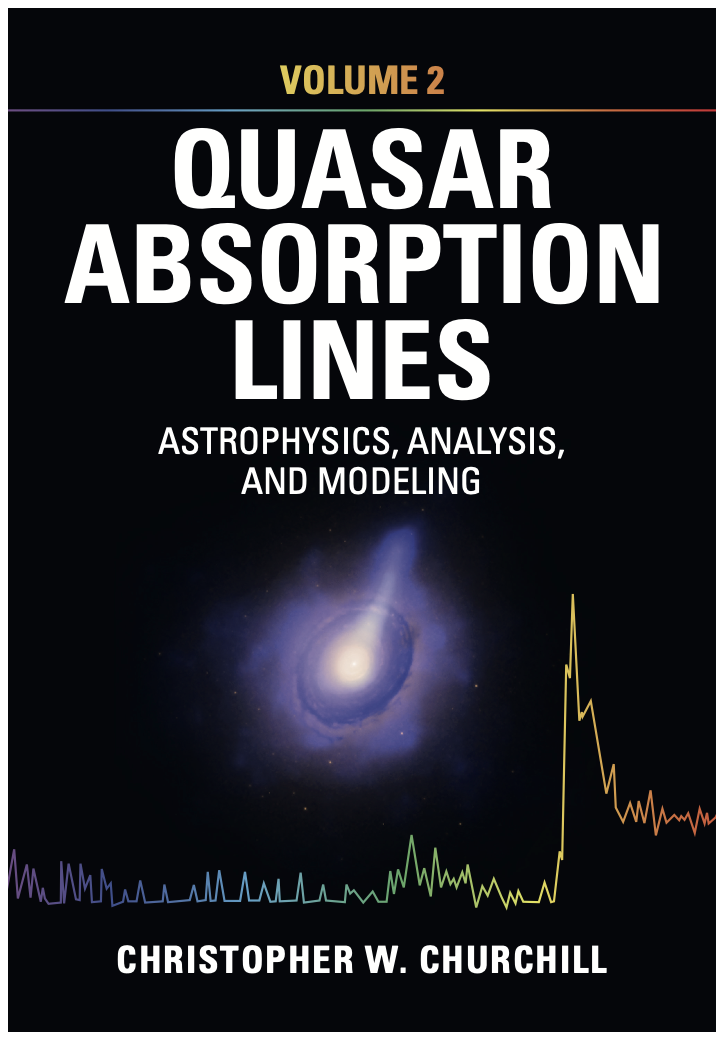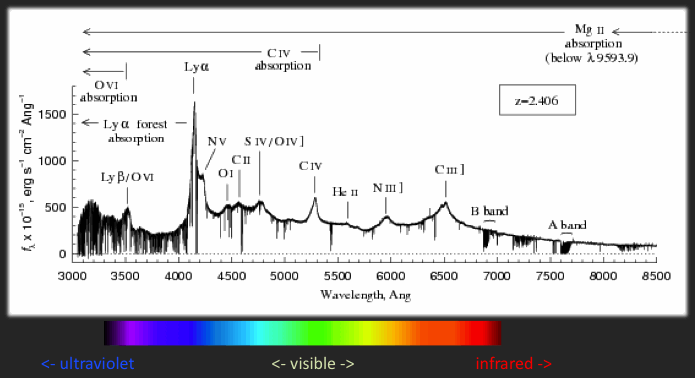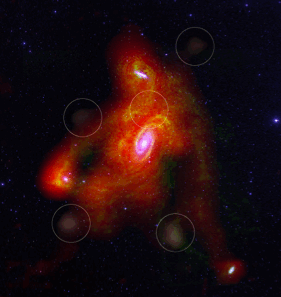
|
CHRISTOPHER W CHURCHILL PROFESSOR DEPARTMENT OF ASTRONOMY NEW MEXICO STATE UNIVERSITY | MAGIICAT | My PhD | HARTRATE | HAMSCATT | Echelle Data Reduction | | All Things Quasar Absorption Lines | Stellar Spectroscopy Lectures | |
You can now preorder the individual volumes published by Cambridge University Press (will ship in December 2025). |
ASTRONOMY TEXTBOOK Quasar Absorption Lines Volume 1: Introduction, Discoveries, and Methods Volume 2: Astrophysics, Analysis, and Modeling
This advanced textbook is suitable for advanced undergraduate students, graduate students, and seasoned researchers in the field. Together, the two volumes provide a comprehensive and detailed treatment of the topic of quasar absorption lines, including its historical development, scientific findings, theoretical foundations, and methods of analysis. For further details navigate to the dedicated webpage where you can read detailed chapter abstracts and more. |
|
|
Volume 1: Introduction Discoveries, and Methods (reduced pre-order price $100) |
|
|
|
I study the evolution of galaxies by examining their circumgalactic medium (CGM), a gaseous reservoir of dynamically complex, multi-phase, metal enriched gas that surrounds galaxies. The gas is observed in absorption using the technique of quasar absorption lines. When a quasar resides behind a galaxy, the GCM gas imprints absorption patterns in the spectrum of the quasar. From these we measure the gas temperature, metallicity, kinematics, etc. We aim to learn about the role of the cycle of gas (called the baryon cycle) in governing the formation and evolution of galaxies. |



